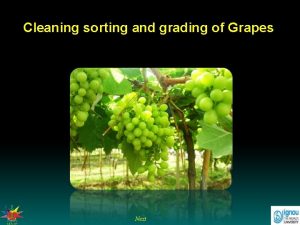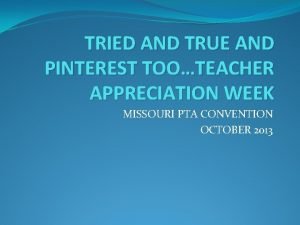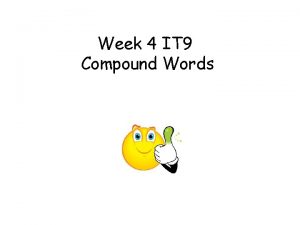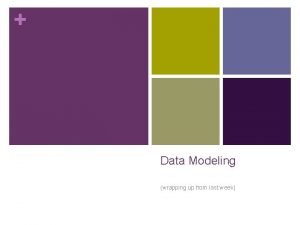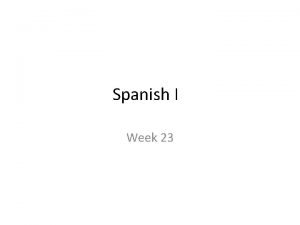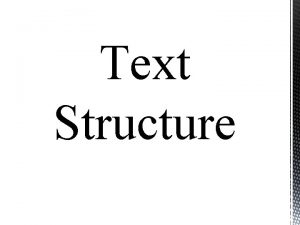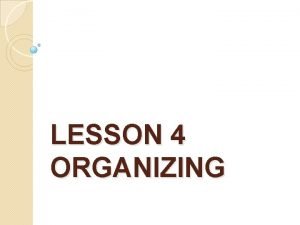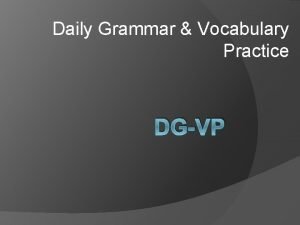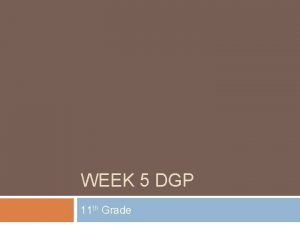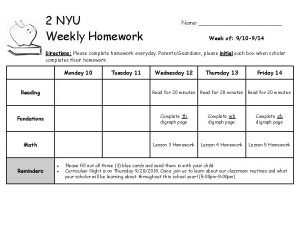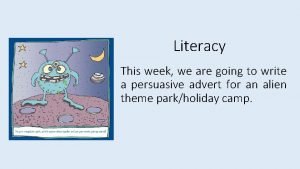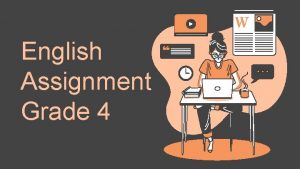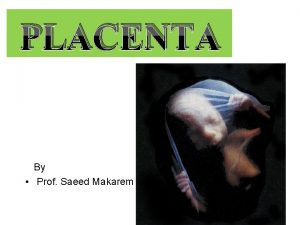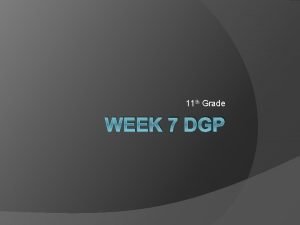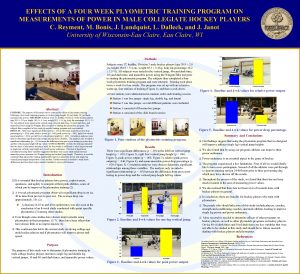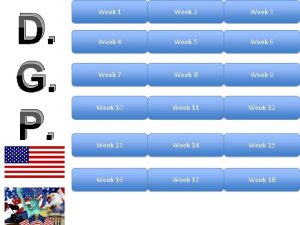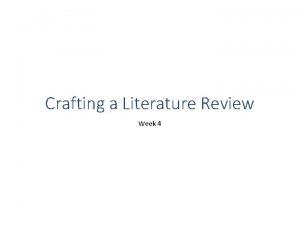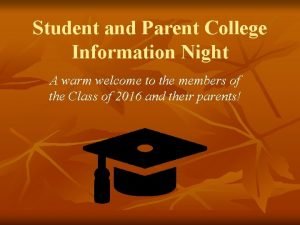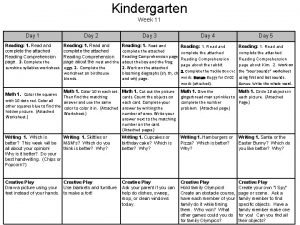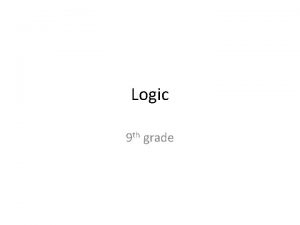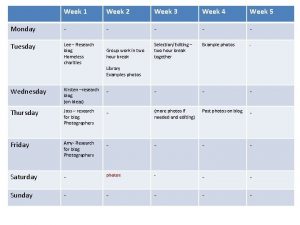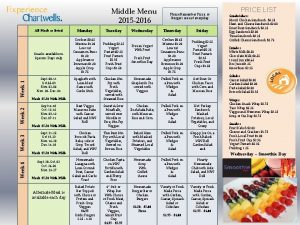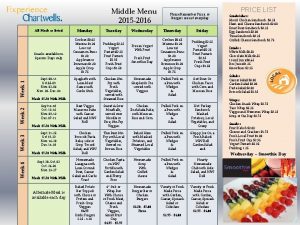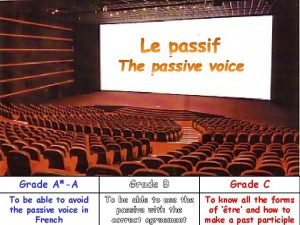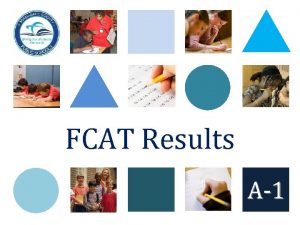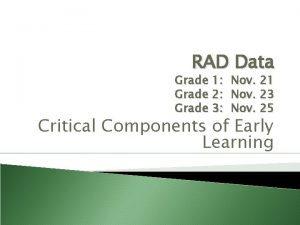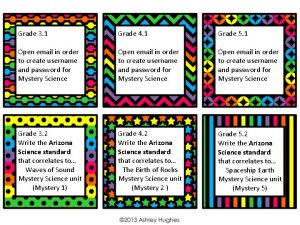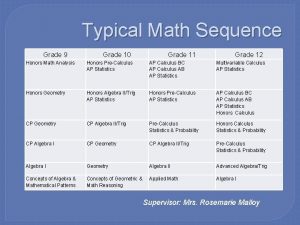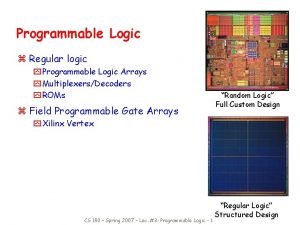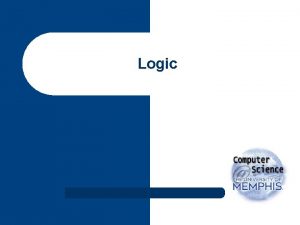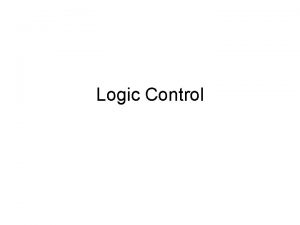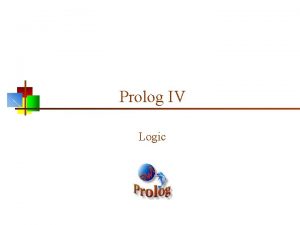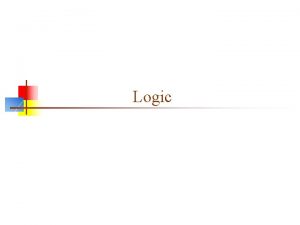Logic 9 th grade Logic Week 1 Logic










































- Slides: 42

Logic 9 th grade

Logic Week 1 • Logic: the study of arguments • Two Main Branches: Formal (Minor) and Material (Major) • Formal Logic: study of the form of an argument • Basic Model of Operation: • Mental Act Verbal Expression • Simple Apprehension Term • Judgment Proposition or Statement • Deductive Inference Syllogism or Argument

Logic Week 1 • the relationship between the Mental Act and Verbal Expression is a simple one: the Mental Act is what is thought and occurs only in the mind but must be turned into the Verbal Expression in order to be shared. Mental Act Verbal Expression

Logic Week 1 • In a short answer explain the relationship between Mental Act and Verbal Expression.

Logic Week 1 • • • Logic Review: 1. What is logic? 2. What are the branches of Logic? 3. What is Formal Logic? 4. Complete the Basic Model of Operation 5. Explain the relationship of the Basic Model of Operation

Logic Week 2 • Simple Apprehension • 1. Sense Perception • 2. Mental Image 3. Concept (abstract to essence: notes) • Comprehension • • *Porphyrian Tree

Logic Week 2 • Simple Apprehension: – The act of having a simple idea and is received through 3 steps: • First, one perceives something (Sense Perception) • Then, one is able to picture that thing in his or her mind without the object being present (Mental Image) • Finally, one is able to reduce the object in their mind to its basic Concept.

Logic Week 2 • Mental Act • 1. 2 3. • 2. • 3. Verbal Expression 1. 2. 3.

Logic Week 3 • Comprehension—the reducing of an idea into its concept – Also called its essence or notes

Porphyrian Tree • Substance: it exists either physically or as an idea. • Material: It has matter • Living: Organic material • Sentient: it can perceive the world around it. • Rational: it is capable of abstract thinking and communication—Mankind

Dog • To use the Porphyrian Tree you would first take the object being considered; then you would go down the list. • • EX: Ask: Does it exist? Does it take up space? Is it living? Is it aware of the world around it?

• To show comprehension of a dog’s existence you would simply list all of the notes in reverse order that applies to the idea. • Dog: Sentient, Living, Material Substance

Practice • • Copy the following and show comprehension: Barracuda Iron Ore Creeper Vines

Practice • Copy the following and show comprehension (list notes): • 1. dolphin • 2. pine tree • 3. copper • 4. surgeon

Extension • Extension: The extent of what belongs to a particular idea. • 2 ways: – Separating ideas from others • Dog, Roses, Gold • “of these three ideas, what belongs to the extension of living things? ” – What is covered by an idea • Dog: What belongs to this group called “Dog? ” • Answer: Every dog that is, was, or will be.

Practice • What is the extension of a psychologist? • What is the extension of elephant? • Using the list from Monday, answer these questions: – What belongs to the extension of rational? – What belongs to the extension of living?

Practice • Copy the following and show comprehension (list notes): • 1. anger • 2. lion • 3. gold • 4. fireman • Use the list from above and answer the following: • 1. What belongs to the extension of sentient? • 2. What belongs to the extension of metals? • What is the extension of democracy?

Practice 3/18 • Copy the following and show comprehension (list notes): • 1. computer • 2. daisies • 3. children • 4. fish • Use the list from above and answer the following: • 1. What belongs to the extension of machine? • 2. What belongs to the extension of plants? • What is the extension of zebra?

Practice, 3/19 • Copy the following and show comprehension (list notes): • 1. zebra • 2. tin • 3. gazelle • 4. palm tree • Use the list from above and answer the following: • 1. What belongs to the extension of animal? • 2. What belongs to the extension of non-sentient living things?

3/21 practice • What is the extension of lion? • Show comprehension for the following: • 1. dove • 2. love • 3. fireman • 4. gold • 5. tulip

4/8 Review Use the following list to answer the following: • rose bush doctor gold • iron ore oak tree building • gazelle kitten anger • • 1. What belongs to the extension of metal? • 2. What belongs to the extension of nonsentient living things?

4/8 Review • • Complete the steps of a Simple Apprehension 1. 2. 3. List the Properties of Simple Apprehension: 1. 2.

4/23 Logic Study • • Mental Act Verbal Expression Simple Apprehension Term Judgment Proposition or Statement Deductive Inference Syllogism or Argument

4/23 Logic Study • Term: The verbal expression of the simple apprehension. – The way in which we share a simple apprehension or idea by use of words.

• 2 Properties of term: • Signification: number of meanings a term has. – Univocal: one meaning – Equivocal: more than one meaning • Supposition: Existence of a term. – Verbal (Material): word (exists only as a word) – Logical: idea (exists as an idea) – Real: Actual (exists in the actual world)

Practice • Supposition Example: Dog • Dog rhymes with log. – (Verbal existence since we are using “dog” only as a word). • Dogs are mammals. – (Logical existence since we are talking about the idea of dogs and not an actual one. ) • My dog is a boxer. – (Real existence since there actually is a dog)

Practice • I. Copy each and state if the identified term is used univocally or equivocally: • 1. Liquids are kept in jars. /Jars can hold peanut butter. • 2. Men are sentient. /Sally is not a man. • Copy each and state the supposition of the underlined term: • 1. Amend rhymes with send. • 2. Animals are sentient.

4/25 practice • Copy each and state if the identified term is used univocally or equivocally: • 1. He poured from the pitcher. /The pitcher threw the ball. • 2. He was in a bind. /They will bind the packages together. Copy and show Comprehension, then answer the following Questions: • Tulips • Independence • Quarterback • • • 1. From the list, which belong to the extension of plant? 2. From the list, which belong to the extension of athlete?

4/26 practice • Copy each and state if the identified term is used univocally or equivocally: • 1. He poured from the pitcher. /The pitcher threw the ball. • 2. He was in a bind. /They will bind the packages together. • Copy each and state the supposition of the underlined term: • 1. The book is on the shelf. • 2. Book has four letters. • 3. Books are material substance.

4/29 practice 1. Show Comprehension of “Rose Bush” 2. What is the extension of “Rose Bush”? 3. Copy and list Signification: The rose was a brilliant deep red. / The sun rose early in the morning. • 4. What is the Supposition of “rose” in the first sentence? • • •

4/30 • Mental Act • 1. • • • 2. • 3. Verbal Expression 1. Steps: 1. 2. 3.

4/30 • Judgment occurs when two ideas are considered together. • If the ideas are alike=affirm • If the ideas are different=deny • The first idea is called the subject, the second idea is called the predicate.

4/30 • When we share these ideas, it is referred to the statement or proposition. • 4 parts: – Subject term (S): first item in the statement – Predicate term(P): second item in the statement. – Copula(c): the verb that connects the two groups (usually is, are, am) – Quantifier(q): the words that determine the number of the group as well as whether the connection between the two groups is + or – (all, no, some…not)

4/30 • Consider the following statement: All dogs are mammals. Practice: All men are rational beings. Some children are not students. No plant is an animal. I am a teacher at APA.

5/3 Practice • Copy and label parts of the statements/propositions: • Some animals are reptiles. • No mammal is a cold-blooded animal. • Dogs are canines. • Some pets are not cats.

5/7 practice • Copy and label parts of the statements/propositions: • 1. Some characters are not allegorical. • 2. Some novels are stories that contain a microcosm. • 3. Ironic endings are surprises.

5/9 practice • Copy the following statements (skip a line between each) in blue or black ink on properly -headed loose leaf. Label the parts of the statements with a red pen: • 1. Some stories are novels. • 2. Symbols are literary devices. • 3. No metaphor is literal. • 4. Some figures of speech are not similes.

5/10 practice • Copy the following statements (skip a line between each) in blue or black ink on properly -headed loose leaf. Label the parts of the statements with a red pen: • 1. All narratives are stories. • 2. Some images are motifs. • 3. No static character is a dynamic one. • 4. Some foreshadowing is not obvious.

5/13 Logic • Categorical: comparing one category to another • Statement Types: Based on quality and quantity • Quality: whether or not the statement affirms or denies (affirmo; nego) – Affirmo: statement affirms the subject is similar to the predicate – Nego: statement denies the subject is similar to the predicate

5/13 Logic Notes • Quantity: whether or not the subject term refers to all or some of a group (universal, particular) • Universal: refers to all or none of the subject • Particular: refers to some of the subject

5/13 logic notes • Quality Afirmo A All S is P I Some S is P Universal Particular Nego E No S is P O Some S is not P

5/14 practice • Copy the following statements (skip a line between each) in blue or black ink on properly -headed loose leaf. Label the parts of the statements and statement type with a red pen: • 1. Some genres are science fiction. • 2. No prose is verse. • 3. Some figures of speech are not similes. • 4. Characters are participants in literature.
 Week by week plans for documenting children's development
Week by week plans for documenting children's development Dgp week 9
Dgp week 9 First order logic vs propositional logic
First order logic vs propositional logic Tw
Tw If x = 0 and y = 1, which output line is enabled?
If x = 0 and y = 1, which output line is enabled? First order logic vs propositional logic
First order logic vs propositional logic Software project wbs example
Software project wbs example First order logic vs propositional logic
First order logic vs propositional logic Is it x y or y x
Is it x y or y x Concurrent vs sequential
Concurrent vs sequential Combinational logic sequential logic 차이
Combinational logic sequential logic 차이 What is the white part of an egg called
What is the white part of an egg called Grading of grapes
Grading of grapes Grades of milk
Grades of milk Grade computing
Grade computing Metamorphic grade
Metamorphic grade Jumping rope history
Jumping rope history Cfnc free application week
Cfnc free application week Teacher appreciation week
Teacher appreciation week Coat compound words
Coat compound words Last week's homework
Last week's homework I week
I week Kelly gallagher article of the week
Kelly gallagher article of the week Welcome to week 3
Welcome to week 3 Last week we installed a kitty door
Last week we installed a kitty door 40-hour work week schedule examples
40-hour work week schedule examples Dgp week 4
Dgp week 4 Dgp week 5 answers
Dgp week 5 answers Pico question examples aphasia
Pico question examples aphasia Name week
Name week Why don't you finish your homework
Why don't you finish your homework Next week we are going to
Next week we are going to Grade 4 assignment
Grade 4 assignment What week does the placenta form
What week does the placenta form Dgp week 7 answers
Dgp week 7 answers 6 week plyometric training program
6 week plyometric training program I wish that i were old enough to vote dgp
I wish that i were old enough to vote dgp Naidoc week meaning
Naidoc week meaning Week 4 backround
Week 4 backround Kidney week abstract submission
Kidney week abstract submission Wat is week 36
Wat is week 36 Cfnc free application week
Cfnc free application week Week 11 day 3
Week 11 day 3












